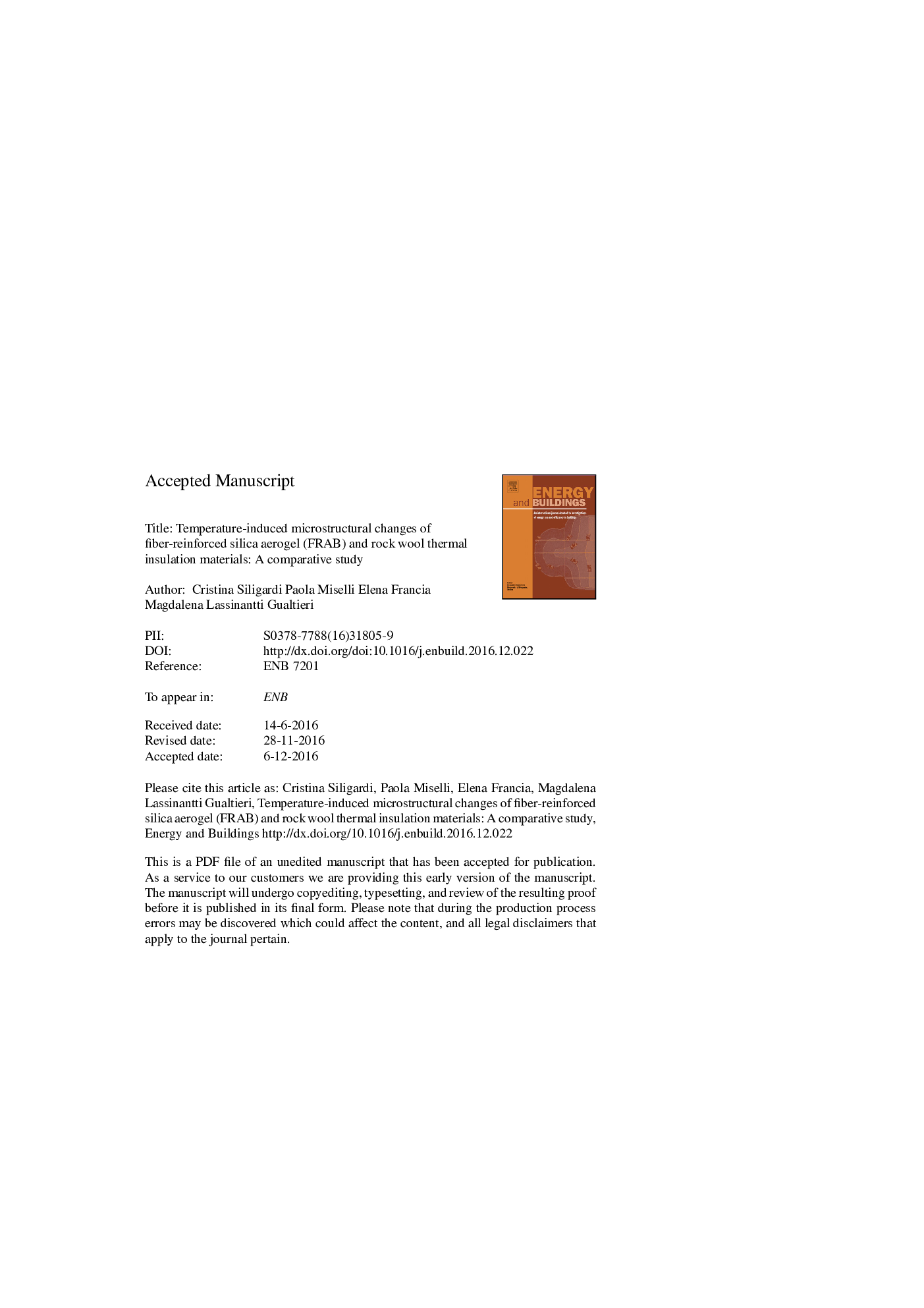| Article ID | Journal | Published Year | Pages | File Type |
|---|---|---|---|---|
| 4919423 | Energy and Buildings | 2017 | 27 Pages |
Abstract
The strive for improved energy efficiency in the building sector has motivated extended research on high-performance thermal insulation materials, leading to new products available on the market. Fiber-reinforced aerogel is a state-of-the-art material suitable as a substitute for traditional ones such as rock wool, especially for retrofitting and refurbishment of historic buildings where interior insulation may be the only alternative. In view of fire safety, commercial products are already tested and classified according to European standards. However, these tests do not give information on microstructural changes which is important to gain full understanding of the material. Knowledge of the reaction dynamics leading to functional changes of the material is needed in order to take actions to improve product quality. Here, the thermally induced microstructure development of fiber-reinforced silica aerogel blankets and rock wool were investigated using in-situ techniques such as thermogravimetry and hot stage microscopy. In addition, X-ray powder diffraction and Scanning electron microscopy analyses were performed ex-situ on thermally treated materials. Flammability was evaluated using cone calorimetry. The results obtained for the two different materials were compared and discussed in view of relationship between microstructure development and fire performance.
Related Topics
Physical Sciences and Engineering
Energy
Renewable Energy, Sustainability and the Environment
Authors
Cristina Siligardi, Paola Miselli, Elena Francia, Magdalena Lassinantti Gualtieri,
